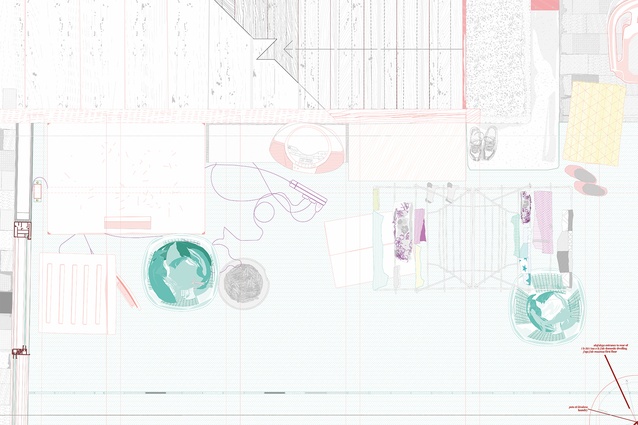Opinion — Left behind: a Pacific story
Karamia Müller considers the housing shortage we have inherited because of the value we place on heritage
Reader, I would like to dedicate my next few columns to some of the stories of housing: not all, just the ones that I know. I am not sure how many I have in me but I project around three or four, or perhaps I’ll continue ’til my time as a columnist ends; the string is very long. This may mean I don’t quite finish the story in one column. I already feel that I need much more time to tell the Pacific chapter of this story (I do). It certainly means I am not sure where this is going but, it is, as with most of these big questions, worthwhile starting with oneself.
When I was a young(er) woman, I was often lucky enough to score a ride with my dad to parties. Some of those parties would be in Ponsonby and, if the stars were aligned, Dad would drive me there while typically on another errand, to drop tools, pick up something, drop something else off or call in on someone. He very rarely went by car for only one thing, as he felt very strongly about both the price of petrol and the climate. He felt we should be careful with a finite resource.
He was a dude and he looked like one, too: very tall and broad-shouldered, with skin the colour of wet earth, his face made up of sharp planes for cheeks, a flat, bulby nose and curling nostrils we both share with my grandmother. This is a lyrical way of saying he was racialised, and racialised in a way that made him stand out in the Ponsonby of my youth. Despite sticking out like a bird of paradise growing in the middle of a row of rose bushes, he knew Karangahape over to Grey Lynn and Ponsonby’s twirling backroads as if they were his own vegie garden.
Once, on one of these rides, I asked him, after he re-routed from my mis-directions to the correct way to an address: “How do you know these streets?” He replied: “I spent a lot of time here.” I remember looking out the car window at a row of manicured hedges and appliance-white, million-dollar homes and thinking: When? and How? By the tone of his words, I knew it was not a straightforward topic to raise and so I did not push for more at the time or later.

A few years later, while researching the use of garages in the homes of Sāmoan diaspora for my master’s degree, I found the answer to my question. Ripples of Pacific migration to Aotearoa began with small numbers for education and theological instruction in the mid-19th century, with vestiges such as the ‘Melanesian Mission’ in Kohimārama, but those Pacific travellers often returned to their homelands. Those gentle movements would turn into rolling waves of migration when World War II called New Zealand men and women into military service, leaving a significant vacuum in the national labour market. Specifically, blue-collar, lower-paid industrial labour. New Zealand, as the governing authority of Rarotonga, Niue and the then Western Sāmoa, was able to fill this gap by enabling migration for workers and their families through a highly liberalised immigration policy and the policing of such measures. Strategic migratory discretion was also extended to Fiji and Tonga through amendments to immigration policies.
A post-war economic boom exacerbated the demand for such workers, which was so palpable that some Pacific elders remember being chased down the street and asked to work. Much of New Zealand’s industrial skeleton was built during that era by Pacific people who filled the shortfall in lower-paid, often-menial, labour. This class of women and men would live in what was perceived at the time to be the ghetto of Tāmaki Makaurau – Ponsonby, Grey Lynn and St Mary’s Bay. Their churches would go on to become thriving Pacific spaces, over-welling with song on Sundays, long after gentrifying gusts would push these communities out to South Auckland. Pacific people would build the infrastructure to a city that would ultimately sweep them to its outskirts. Many still return to the inner-city for work and education, a round trip for which can cost up to and more than $10 and 1.5 hours in time in a country where the hourly living wage is $22.75.
The force that pushed Pacific communities to the South was the same force which pulled them: housing. The large 19th-century villas, originally developed to cater for large, middle-class palagi families in Ponsonby and the surrounding areas, became, in the 1960s, inexpensive rentals that could accommodate large Pacific families. But, by the ’70s, those rentals were attracting another demographic: that of the young professional. Pip Cheshire called it “bourgeois rot” in a recent column; it was, for opportunists, a gold rush. Central city suburbs, with rich social geography bursting with colour and culture, offered very, very cheap houses.
Developers began to purchase with the explicit purpose of onselling after renovation and landlords evicted Pacific families to take advantage of this new market. Behaviours that were exacerbated by prejudices: stereotypes of Pacific people were that they were unskilled with little to no experience of urban living. Professor of Anthropology and Economic Geographer David Harvey squares it as: “the private character of property rights and the power these rights confer to appropriate not only the labour but the collective products of others”.1 This story is one that is still unfolding and it is one of history repeating itself.
When I read Pip’s ‘Force de frappe’ and Roger Walker’s reply by way of his Letter to the Editor, I found myself curious about how we are thinking about the role of the architect, the role of the industry and the ways they intersect with the intergenerational, as it relates to housing. I tend to think the profession as a whole could be more actively engaged in imagining new ways of thinking about housing, contextualised by Te Tiriti: Tangata Whenua and Tangata Tiriti.
I am not sure there is time for feeling philosophical about the profession’s privileges. In my opinion, the question is not what is lost with density, it is about what is gained. I think the question of architectural heritage should strike a balance with other types of heritage issues, such as meaningfully thinking about breaking intergenerational poverty for the communities whose labours we have enjoyed. Even outside of those communities, to inherit a housing shortage at the price of heritage I have a hard time reconciling. I love good-faith debate and I enjoy robust discussion that empowers and challenges people to think hard and deeply about the built realm, and that is constructive. That said, I could not help but feel as though the true picture of the current housing shortage is, for the majority of the country’s principal and leading architects, still, too abstracted because of distance from the sharp points of housing. (Pip and I have sparred before in the architecture arena of the Crit so I like to think this is in keeping with a discursive tradition.) If we are to zoom out and take in the picture of housing and situate it within a longer moment of Pacific migration, from the Pacific to city centres to city fringes, we see communities being left behind, again, and a profession which can, and should, architect the future differently.
1. David Harvey, ‘The right to the city’, 2008, newleftreview.org/issues/ii53/articles/david-harvey-the-right-to-the-city










